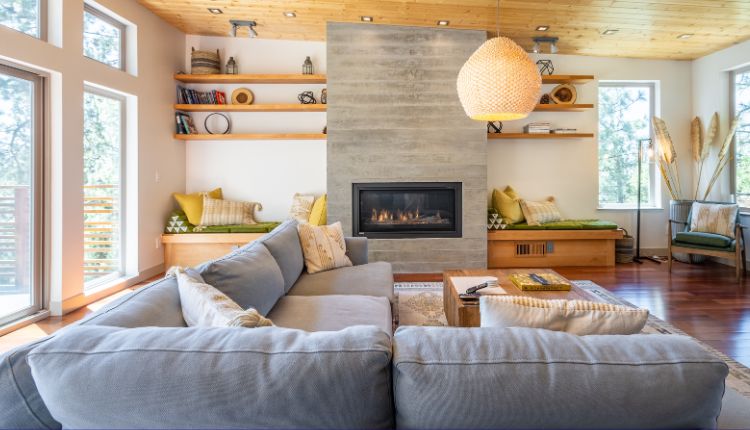Every home crafter knows that moment of truth – when you finish a handmade pillow, hold it in your hands, and immediately sense whether it’s a success or disappointment. That feeling of a pillow being too flat, developing lumps, or just not having that “finished” look often comes down to one critical element that remains hidden from view: what’s inside. The selection of interior materials for soft furnishings represents a specialized craft in itself, one that separates amateur projects from professional-looking results and opens doors to truly customized comfort that matches your exact vision.
Understanding Your Stuffing Options
The world of fill materials offers a fascinating array of choices, each with distinct characteristics that serve different purposes and aesthetics. The journey begins with understanding these options beyond their basic descriptions.
Polyester fiberfill remains the workhorse of the craft world for good reason. Its hypoallergenic properties make it ideal for households with allergy sufferers, while its synthetic nature resists moisture and mold. What many crafters don’t realize is that fiberfill comes in different densities and fiber lengths – shorter fibers tend to be softer while longer fibers provide more structure and resilience. The cluster-based structure of high-quality fiberfill allows it to bounce back repeatedly, maintaining its shape through years of use.
For those drawn to natural materials, cotton batting presents an excellent alternative with its firm, flat support and exceptional breathability. However, natural fibers like cotton do require understanding their characteristics – they will naturally compact over time, meaning you may need to initially overstuff slightly or plan for occasional fluffing and reshaping. The environmental appeal of natural materials extends beyond the fiber itself to the production processes, with many manufacturers now offering organic and sustainably sourced options.
The luxury tier belongs to down and down-alternative clusters, which create that irresistible sink-in comfort we associate with high-end decor. Natural down, harvested from ducks or geese, provides unparalleled softness and moldability but comes with considerations about allergies and ethical sourcing. Modern down-alternative clusters have made remarkable advances, mimicking the plush feel of natural down while being hypoallergenic and often more affordable. These materials work particularly well in decorative throw pillows where luxurious drape and softness are prioritized over firm support.
Beyond these classics, innovative materials continue to emerge. Memory foam shredded fill combines support with custom moldability, while wool batting offers natural temperature regulation and resistance to dust mites. For those interested in eco-friendly options, kapok fiber (from seed pods) and buckwheat hulls provide sustainable alternatives with unique textural qualities.
The Art of Achieving the Perfect Loft
Mastering fill density represents perhaps the most crucial skill in creating professional-looking soft furnishings. The difference between a pillow that looks sad and deflated versus one that appears rigid and uncomfortable comes down to this delicate balance. The process requires both technical knowledge and artistic intuition.
Begin by considering the pillow’s purpose. A decorative throw pillow for a sofa might call for a plumper, more structured look, requiring firmer packing of material. A bed pillow or reading pillow, however, benefits from a softer hand that allows for comfortable nesting. The golden rule remains gradual addition – never dump all your filling in at once. Add small amounts, compress the pillow frequently, and assess the developing firmness from all angles.
Seasoned crafters develop what might be called “the compression test” – firmly pressing the filled item and observing how quickly it returns to shape. Immediate spring-back typically indicates potential overfilling, while slow recovery suggests underfilling. The sweet spot usually lies somewhere in between, where the pillow maintains its shape while still inviting touch and use.
Different fill materials behave uniquely during this process. Natural down requires significant compression and may initially seem underfilled until it has time to expand. Polyester fiberfill tends to hold whatever density you create, while cotton batting will settle noticeably in the first few weeks of use. Anticipating this settling is key – many professional crafters intentionally overstuff by 10-15% when using natural fibers that compact over time.
The shape of your project also dictates technique. Corners particularly challenge many crafters – the secret lies in using smaller tools to push filling firmly into these areas before addressing the center. For knife-edge pillows, slightly underfilling creates that clean, tailored look, while fully stuffed box-edge designs require careful attention to maintaining even distribution throughout the structured sides.
Strategic Sourcing for the Serious Crafter
For crafting enthusiasts who have moved beyond occasional projects to regular creation, the economics and logistics of material sourcing demand strategic thinking. The pattern of constantly visiting craft stores for small, premium-priced bags becomes not just expensive but creatively limiting. Those truly committed to their craft discover that advanced planning for larger material needs proves both economically smart and artistically liberating.
Establishing a relationship with a supplier who can provide consistent, high-quality fill materials in substantial quantities transforms the creative process. It eliminates the frustration of starting a project only to discover your local store has discontinued your preferred filling. More importantly, it ensures that every pillow in a collection – whether for your home or for sale – possesses an identical feel and quality. This consistency becomes particularly crucial when creating matching items across different rooms or producing multiple pieces for clients.
The financial benefits extend beyond simple per-unit cost savings. Buying in larger quantities reduces the time and expense of multiple store trips, allows you to take advantage of seasonal pricing, and provides the flexibility to experiment without worrying about “wasting” expensive materials. This freedom to experiment often leads to technical breakthroughs and creative discoveries that wouldn’t occur when rationing small amounts of materials.
Beyond economics, strategic sourcing supports creative spontaneity. When inspiration strikes for multiple matching pillows or a last-minute gift project, having materials readily available means you can act immediately rather than waiting for store hours or shipping delays. This readiness transforms crafting from a scheduled activity into an organic creative practice.
Conclusion
The journey to creating beautiful, professional-quality soft furnishings at home proves deeply rewarding on multiple levels. Beyond the pride of creation, it offers the practical benefit of customizing comfort and aesthetics to your exact preferences. By thoroughly understanding the spectrum of available fill materials, mastering the nuanced technique of achieving perfect loft, and implementing smart material sourcing strategies, you ensure your creations are not only beautiful but built to last through years of enjoyment.
The informed crafter approaches fill selection with the same purposeful consideration a furniture maker applies to wood selection or a chef to ingredient sourcing. This thoughtful approach transforms simple fabrics into heirloom-quality home decor that reflects both beauty and intelligence in construction. For those ready to elevate their entire crafting practice, considering a pillow stuffing bulk approach to material sourcing represents more than just an economic decision – it’s a transformative step toward achieving true creative freedom and professional-level results in your home decor projects.






